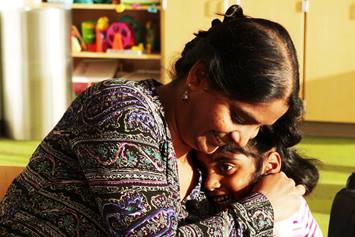Spasticity
Spasticity is a muscle control disorder that involves tight or stiff muscles and an inability to control those muscles.
What Is Spasticity?
Spasticity is a muscle control disorder that involves tight or stiff muscles and an inability to control those muscles. Spasticity affects more than 12 million people worldwide, including about 80 percent of people with cerebral palsy. Despite advances in medicine, cerebral palsy is still the most common motor disability in childhood, affecting one out of 500 children.
Normally, muscle movements are controlled by a complex system that lets some muscles contract or tighten, while other muscles are relaxed. Spasticity is a condition in which certain muscles are continuously contracted or tightened. This contraction causes the muscles to be stiff or tight and can make normal movement, speech and walking difficult.
What Causes Spasticity?
Spasticity is caused by an imbalance of the signals that are sent from the central nervous system (the brain and spinal cord) to the muscles in the body. Damage to the nerves in the central nervous system can cause problems with muscle strength and coordination.
There are two messages that are sent to the spinal cord to coordinate muscle movements in the body. The first is the signal to tense, or increase muscle tone. This message travels through nerves from the muscle to the spinal cord. These nerves tell the spinal cord how much tone, or tension, the muscle has.
The second is the message to be flexible, or decrease muscle tone. This signal travels to the spinal cord from the nerves in the brain. The two kinds of messages need to work well together in the spinal cord for strong, smooth muscle movements.
People with cerebral palsy, traumatic brain injury, stroke, spinal cord injury and other conditions that affect the brain and/or spinal cord may experience spasticity. In the case of cerebral palsy spasticity, the brain damage happens before, during or after birth. This damage is not reversible and is usually in the area of the brain that controls muscle tone and movements of the arms and legs.
As a result, the brain of a person with cerebral palsy is not able to correctly send the message about how flexible the muscle should be. Instead, the message from the muscle to the spinal cord, the one that signals the muscle to tense, is the message that dominates. This is why the muscle is too tense, or spastic, for people with cerebral palsy.
What Are the Symptoms of Spasticity?
Spasticity mostly occurs in the legs, but can also occur in the arms. Here are some symptoms of spasticity:
- Increased muscle tone
- Involuntary movements, which may include spasms and contractions
- Overactive reflexes
- Pain or discomfort
- Less ability to function
- Problems with care and hygiene
- Abnormal posture
- Contractures (permanent contraction of the muscle and tendon due to severe lasting stiffness and spasms)
- Bone and joint deformities
Although spasticity can be detected during the first year of life in babies that have severe cerebral palsy, it is usually not found until later on in life. Once cerebral palsy spasticity has developed, it never resolves suddenly or on its own.
How Is Spasticity Treated?
Treatment is needed when spasticity causes pain, interferes with daily activities or sleep, or leads to less ability to function. There are many types of treatment available, depending on the cause of spasticity, the age of the patient and severity of the spasticity.
Different treatments have common goals, such as relieving the symptoms of spasticity, reducing the pain and frequency of muscle contractions, and making it easier for caregivers to dress, feed or bathe the patient.
Non-medical treatments might include physical and occupational therapy like stretching and strengthening exercises, temporary braces or casts, application of cold packs or electrical stimulation. Oral medications might be prescribed when symptoms interfere with daily functioning or with sleep.
The best way to treat spasticity is to have a caregiver work with a team of healthcare professionals from different areas, to come up with an individualized treatment plan. Our expert team of pediatric neurosurgeons, neurosurgery nurse practitioners and therapists offer the complete spectrum of multidisciplinary care for patients at Nationwide Children’s Hospital, including a specialty program for the treatment of spasticity.


